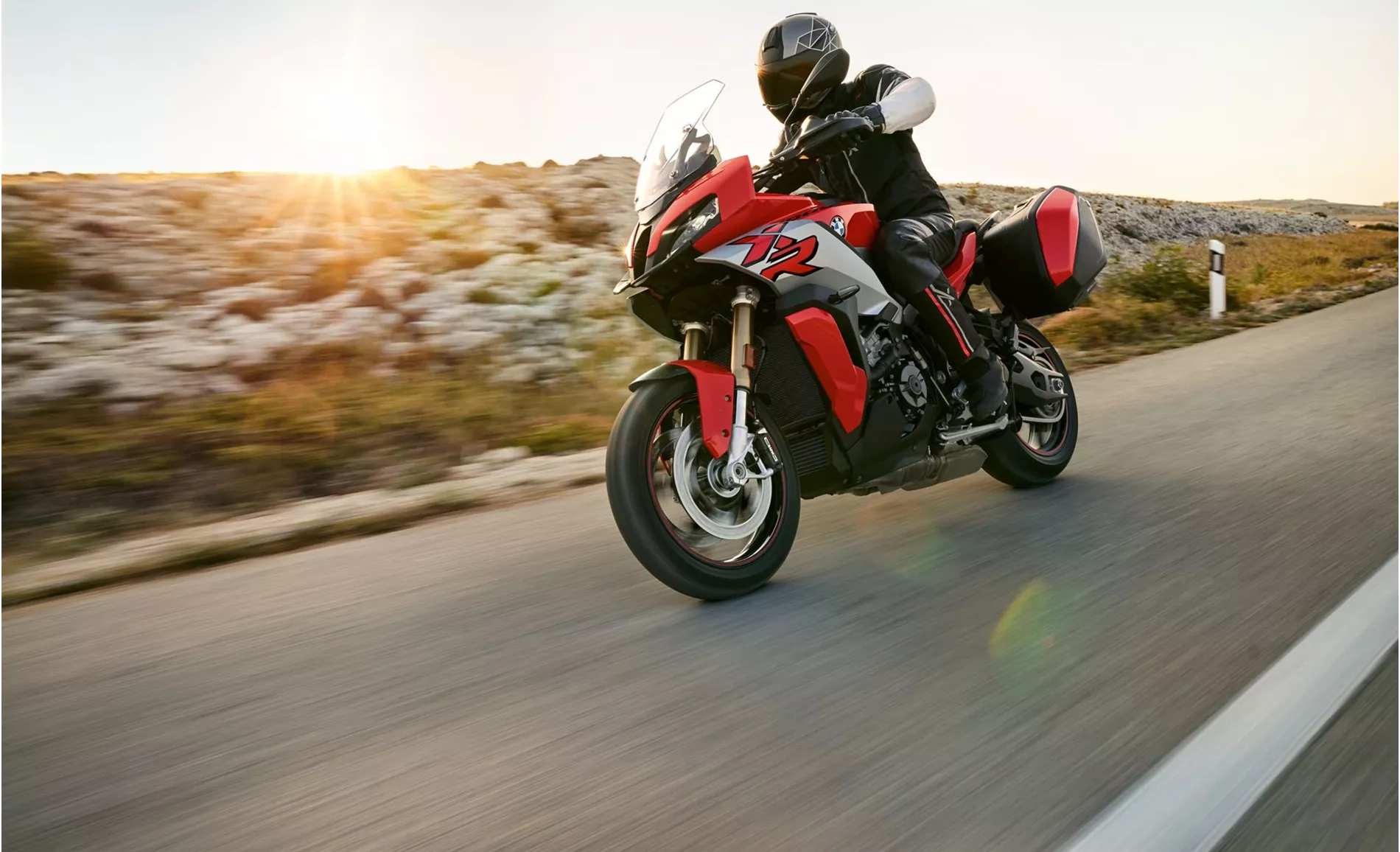BMW S 1000 XR 2020 vs. BMW S 1000 R 2014

BMW S 1000 XR 2020

BMW S 1000 R 2014
Vue d’ensemble - BMW S 1000 XR 2020 vs BMW S 1000 R 2014
The BMW S 1000 XR 2020 and the BMW S 1000 R 2014 are both sporty motorcycles from BMW, but they have some notable differences in terms of specifications and features.
Starting with the engine, both models have an inline four-cylinder engine with a displacement of 999cc. However, the S 1000 XR 2020 has a slightly higher engine power of 165 HP compared to the S 1000 R 2014's 160 HP. The torque is also slightly higher in the S 1000 XR 2020 with 114 Nm compared to the S 1000 R 2014's 112 Nm. Both models have a chain transmission and a 4-stroke engine.
In terms of suspension, both models feature an upside-down telescopic fork in the front and a swing arm with a monoshock in the rear. The chassis of both models is made of aluminum, but the S 1000 XR 2020 has a twin-tube load-bearing engine frame, while the S 1000 R 2014 has a twin-tube frame.

BMW S 1000 XR 2020
Both models have double disk brakes in the front with four pistons and radial technology. The S 1000 XR 2020 also has advanced rider assistance systems including electronically adjustable suspension, riding modes, cornering ABS, ride by wire, and traction control. The S 1000 R 2014, on the other hand, has dynamic suspension as its advanced rider assistance system.
In terms of dimensions and weights, both models have the same front and rear tire width and diameter. However, the S 1000 XR 2020 has a longer wheelbase of 1552 mm compared to the S 1000 R 2014's 1439 mm. The seat height is also higher in the S 1000 XR 2020 with 840 mm compared to the S 1000 R 2014's 814 mm. The S 1000 XR 2020 is slightly heavier with a kerb weight of 226 kg compared to the S 1000 R 2014's 207 kg. The fuel tank capacity is also larger in the S 1000 XR 2020 with 20 liters compared to the S 1000 R 2014's 17.5 liters.

BMW S 1000 R 2014
In terms of strengths, the S 1000 XR 2020 offers great connectivity and integration with mobile phones, a revving four-cylinder engine with a wide usable rev band, pleasant engine tuning, well-balanced vehicle even with a pillion passenger, good brakes, good wind and weather protection, adjustable windshield, and a good quickshifter. The S 1000 R 2014, on the other hand, is praised for its sporty chassis, extreme power and performance, very good electronic helpers, and a terrific price/performance ratio.
However, the S 1000 XR 2020 has some weaknesses including a narrow knee angle on long tours for tall people and suspension damping that is not sensitive enough, making it difficult to find a comfortable setup. The S 1000 R 2014 has a slightly rough engine running, a seat that is relatively high, and a design that is subjective to personal taste.
Overall, both the BMW S 1000 XR 2020 and the BMW S 1000 R 2014 are impressive motorcycles with their own strengths and weaknesses. The S 1000 XR 2020 excels in terms of connectivity, comfort, and versatility, while the S 1000 R 2014 is more focused on sporty performance and value for money.
Caractéristiques techniques BMW S 1000 XR 2020 par rapport à BMW S 1000 R 2014
Avantages et inconvénients en comparaison
Avantages et inconvénients en comparaison
BMW S 1000 XR 2020

La BMW S 1000 XR offre une moto de tourisme agréable sur la base d'une supersports. Cela ressemble à un compromis - mais elle se conduit comme un développement parfaitement ciblé. La moto est pratique et sophistiquée. La protection contre le vent et les intempéries est très bonne, l'intégration du téléphone portable est de classe mondiale et le moteur fait toujours plaisir. Le châssis s'adapte certes bien à l'état de charge, mais il n'est jamais sensible ni vraiment confortable. Le confort d'assise est bon, mais l'angle du genou devient un peu aigu lors des longues randonnées. Il n'en reste pas moins qu'il s'agit d'une moto formidable avec laquelle on aime rouler de manière sportive, mais aussi très loin.
BMW S 1000 R 2014

Une puissance brutale, une électronique douce, presque parfaite, il n'y a que la HP4 pour faire mieux. Après les superbikes, BMW domine désormais la catégorie des nakedbikes de 1000 cm3.
Comparaison des prix Prix moyen du marché BMW S 1000 XR vs BMW S 1000 R
There are a few key differences between a BMW S 1000 XR 2020 and a BMW S 1000 R 2014. In terms of price, the actual average price of a BMW S 1000 XR 2020 is about 75% higher. A BMW S 1000 XR 2020 experiences a loss of 520 USD in one year of ownership. This is offset by a loss of 590 USD for a BMW S 1000 R 2014. Compared to BMW S 1000 R 2014 there are more BMW S 1000 XR 2020 bikes available on the 1000PS.de Marketplace, specifically 21 compared to 19. It takes less time to sell a BMW S 1000 XR with 68 days compared to 70 days for a BMW S 1000 R. Since model year 2015 1000PS.de editors have written 40 reviews for the BMW S 1000 XR and 62 reviews for the BMW S 1000 R since model year 2014. The first review for the BMW S 1000 XR was published on 10/21/2014 and now has more than 16,000 views. This compares to more than 17,300 views for the first review on BMW S 1000 R published on 11/3/2013.
























